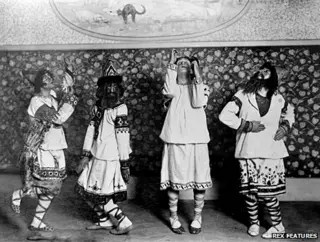
Word of the Day: Egregious
Today’s word of the day, thanks to the Words Coach, is egregious (https://www.wordscoach.com/dictionary). Egregious is an adjective that means “conspicuously bad” (https://www.merriam-webster.com/dictionary/egregious). It can be pronounced in three or four syllables: ɪˈgri dʒəs, -dʒi əs /. I’ve heard it more often pronounced with three syllables.
Etymonline.com says that it appears in the English language in the “1530s, ‘distinguished, eminent, excellent,’ from Latin egregius ‘distinguished, excellent, extraordinary,’ from the phrase ex grege ‘rising above the flock,’ from ex ‘out of’ (see ex-) + grege, ablative of grex ‘a herd, flock’ (from PIE root *ger- ‘to gather’). Disapproving sense, now predominant, arose late 16c., originally ironic. It is not in the Latin word, which etymologically means simply ‘exceptional’” (https://www.etymonline.com/search?q=egregious). So in English the word has undergone the linguistic change we call pejoration, “an historical process by which the semantic and connotative status of a word tends to decline” (https://www.merriam-webster.com/dictionary/pejoration). It’s interesting that pejoration occurs only in English and not in the source language.
I am not a big fan of classical music, but I did take a series of classes in college, called Humanities, in which I was introduced to classical music. Don’t get me wrong; it’s not that I dislike classical music. My father, on the other hand, was a true afficianado. He listened to almost nothing but classical music; he bought himself a very nice (for the 1970s) stereo system, and bought a powerful antenna, so that he could listen to the classical music station out of Philadelphia. When I was a teenager, he took me to the Academy of Music in Philadelphia so that I could experience the Philadelphia Orchestra.
And I have had other experiences. I saw Thaïs at the Metropolitan Opera in NYC and did a backstage tour, though that was a result of being a theater major in college. I was actually a supernumerary in a Charlotte Opera production of Turandot when I was in college. For some reason that I still cannot figure out they did not want me to sing. My wife and I met at a performance of The Nutcracker Suite in Charlotte. In fact, my wife was a piano major in college, and as a result I heard a lot of classical piano music through the years.
I guess I just never felt a passion about classical music. But on this date in 1913, a lot of people had a passionate experience with classical music. Specifically, on this date 112 years ago “The Rite of Spring, [a] ballet by Russian modernist composer Igor Stravinsky … premiered at the Théâtre des Champs-Elysées in Paris” (https://www.britannica.com/topic/The-Rite-of-Spring).
The Rite of Spring “is considered one of the first examples of Modernism in music and is noted for its brutality, its barbaric rhythms, and its dissonance. Its opening performance provided one of the most scandalous premieres in history, with pro and con members of the audience arguing so volubly that the dancers were unable to take their cues from the orchestra” (ibid.). “In a note to the conductor Serge Koussevitzky in February 1914, Stravinsky described Le Sacre du printemps [that’s the French title] as ‘a musical-choreographic work, [representing] pagan Russia … unified by a single idea: the mystery and great surge of the creative power of Spring’. In his analysis of The Rite, Pieter van den Toorn writes that the work lacks a specific plot or narrative, and should be considered as a succession of choreographed episodes” (https://en.wikipedia.org/wiki/The_Rite_of_Spring).
The composer blamed the hubbub on the audience: “Stravinsky himself believed that the crowd ‘came for Scheherazade or Cleopatra, and they saw the Sacre du Printemps’, and were therefore upset at the level of dissonance in the score, the jerky movements of the dancers and the rapidly twittering sounds from the woodwind section. ‘The curtain opened on a group of knock-kneed and long-braided lolitas, jumping up and down. The storm broke,’ the composer recounts. ‘I went out, I said “go to hell”… they were very naïve and stupid people’” (https://www.classicfm.com/composers/stravinsky/news/rite-and-the-riot/).
Then again, there may have been other factors involved: “Or did they simply desire to see something outrageous? Contrary to popular belief and contrary to the composer’s own account, it was likely not just the shock of hearing the music, nor Nijinsky’s exotic choreography, nor Roerich’s bizarre settings that prompted the riot that ensued in the theatre. There were anti-Russian, anti-Diaghilev and anti-Nijinsky factions at work in Paris, determined to disrupt proceedings before a note of music had been heard” (ibid.).
But the story that has come down to us is that the audience was so appalled by the Stravinski’s modernist music and Nijinsky’s choreography that they rioted. And it would not be the first time an audience rioted because of an artistic performance. In January of 1907, riots followed the opening of John Millington Synge’s The Playboy of the Western World because Irish nationalists felt that the portrayal of Irish people and Irish dialect was offensive. There are numerous stories of riots erupting after movie premieres.
I haven’t heard of any riots during or after classic music concerts or operas or ballets recently. Perhaps that is because people today do not engage in such egregious behavior. Or perhaps it’s just a function of apathy.
Our image today is from the original production of The Rite of Spring, with choreographer and dancer Vaslav Nijinsky on the left (https://www.bbc.com/news/magazine-22691267).